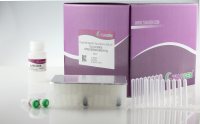Immunological Responses of Neonates and Infants to DNA Vaccines
互联网
650
In some parts of sub-Saharan Africa, it is believed that most of the deaths attributed to malaria occur in infants. For this and other logistical reasons, if a malaria vaccine is developed and licensed, it will have to be administered to neonates or young infants, when they have maternally acquired antibodies against malaria parasite proteins. Pre-erythrocytic malaria vaccines in development rely on CD8+ T cells as immune effectors, yet some studies indicate that neonates do not mount optimal CD8+ T-cell responses. We report that BALB/c mice first immunized as neonates (7 d) with a Plasmodium yoelii circumsporozoite protein (Py CSP) DNA vaccine mixed with a plasmid expressing murine granulocyte macrophage-colony stimulating factor (DG) and boosted at 28 d with pox virus expressing Py CSP were protected (93%) as well as mice immunized entirely as adults (70%). Like adults, protection was dependent on CD8+ T cells and accompanied by excellent anti-Py CSP interferon-γ and cytotoxic T-lymphocyte responses. Mice born of immune mothers (previously exposed to P. yoelii parasites or immunized with the same vaccine given to the neonates) were also protected and had excellent T-cell responses. These data support assessment of this immunization strategy in neonates/young infants in areas where malaria exacts the greatest toll.






